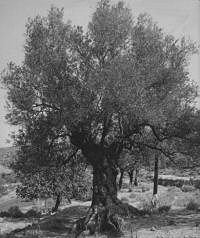
LIN FOXHALL. Olive cultivation in ancient Greece: seeking the ancient economy. xviii+294 pages, 66 illustrations, 8 tables. 2007. Oxford: Oxford University Press; 978-0-19-815288-0 hardback £65.

LIN FOXHALL. Olive cultivation in ancient Greece: seeking the ancient economy. xviii+294 pages, 66 illustrations, 8 tables. 2007. Oxford: Oxford University Press; 978-0-19-815288-0 hardback £65.
Review by Jean-Pierre Brun
Centre Jean Bérard, UMS 1797 CNRS-Ecole Française de Rome, Napoli,
Italy
(Email: berard@unina.it)
(Translated from the French by Reviews Editor)

There are works of synthesis which summarise, from the most recent publications, the state of knowledge reached in a given subject. These are useful enough guides through the dense jungle of modern publishing. But there are others, with a real project and thrust: this is the case of Foxhall's volume, a work which expounds her vision of olive cultivation in Archaic and Classical Greece.
The fruit of 30 years of research, which includes documentary study and fieldwork in the region of Methana in the Argolid, these 294 pages published by Oxford University Press in 2007 re-place Greek oil production in context. The author, who often takes up positions contradicting those of previous researchers, presents a tightly argued critique: not only of the interpretation of the rare surviving documents - emphasising that they only give partial insights into the holdings of rich landlords - but also of the available archaeological evidence. She rightly takes issue with the over-interpretation of the presses of Klazomenes, the only archaeological remains of an oil production site of the end of the Archaic period, showing that there are no traces of a rotary crusher and demonstrating that the presses have been incorrectly reconstructed. She is similarly critical about the results of surveys conducted in southern Argolid and in the demos of Atene in Attica, which leads her to conclude that very few remains of presses can be attributed to the sixth-fourth centuries BC. The increase in oil production, previously inferred from these results, seems, at best, much exaggerated. After exposing how ideology and assumptions, such as the application of modern economic concepts or the use of more detailed Latin sources to explain Greek oil production, have skewed the views of a number of previous authors, and after eliminating controversial interpretations, Foxhall presents her own theories, briefly summarised here.
Given the social and cultural conditions of Archaic and Classical Greece, underlined with great accuracy by the author, olive trees could only have been cultivated in small numbers, even on large estates. Their produce served mainly domestic needs and only in good years could there have been a surplus for sale. Mills and large fixed presses were therefore not necessary on all exploitations, perhaps not even on all the great estates. Rudimentary installations and equipment would be sufficient, as the lack of power could be compensated by greater investment in time and labour, notably slave labour. This would explain why presses with domed crushers (Roman trapeta) only appear during the fourth century BC; it is thus not surprising that they were missing from the lists of goods confiscated after the scandal of the mutilation of the Hermes statues in Athens at the end of the fifth century BC. These crushers only appear during the fourth century BC in Macedonia and in Chersoneses which are regions of intensive cultivation and large estates. The farm of Argilos, which had been the property of a member of Philip's entourage and which contained a superb mill, is emblematic of this time and region.
Foxhall takes the argument further, suggesting that presses were both transportable and multi-purpose, being used for wine as well as oil production or other industrial purposes, and this up to the Roman period. This point of view, and one she reiterates several times (pp. 132, 138, 184), is, however, not grounded in textual sources or archaeological evidence. This leads to some re-interpretations: for example that the Boston Museum skyphos is not of unknown function but a wine press as she wrote herself long ago (p. 135), or that the press from Street 5 in Delos is specifically for wine production and that it is Late Roman in any case (p. 162). Such multi-functionality would, bar a few exceptions, contradict most of the historical and ethnographic tradition. Nevertheless, the author's point, emphasised several times, merits further consideration and should inform further archaeological investigations. Another point of contention is the type of crushing which Columella described as involving 'canalis et solea'. Granted, the interpretation as a trough in which the olives were crushed with wooden clogs is not certain, but it is not as unlikely as Foxhall would have us believe, since it is a method which was still in use in Corsica in the eighteenth century and in Spain in the nineteenth century. And let us leave aside the low relief from the Palazzo Rondanini, since I have demonstrated that the scene depicted there refers to wine making, not oil pressing.
My criticisms, and there could be more, are nevertheless minor compared with the many insights the author offers. Amongst them: that olive oil in Archaic and Classical Greece was not a cash crop; that olive trees were cultivated for domestic purposes, which could be quite important in large households; that the trees were planted not on terraces gained from marginal land but on good soil, generally located next to arable land; that oil, used in quantities in food, care of the body and lighting, was produced without great expense; that crushing was carried out most often by stone rollers and that pressing was done in small presses operated by levers, which could be dismantled and were perhaps used for user purposes.
Foxhall's book deserves a more detailed review than there is space for here. Suffice to say that this original work, matured over time, is based on a deep knowledge of Greece and its olive production.
